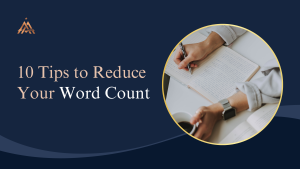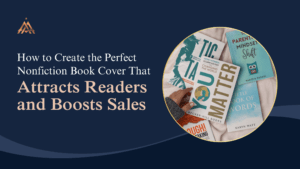In the bustling world of books, where thousands of titles vie for readers’ attention, a powerful book hook can make all the difference. But what exactly is a book hook, and why is it so crucial for authors, especially in the non-fiction genre? This article will dive deep into the concept of book hooks, their importance, and how you can craft one that captivates readers and drives sales.
What is a Book Hook?
A book hook is a brief, attention-grabbing statement or piece of information designed to entice readers to want to learn more about a book. Think of it as the literary equivalent of a movie trailer. It’s typically found on the back cover, in an author’s bio, or even within the first few lines of the text. The goal is simple: to spark enough curiosity to make someone pick up the book and, ideally, buy it.
The Importance of a Good Book Hook
Grabbing Attention
In an age where readers have countless options at their fingertips, grabbing attention quickly is crucial. A compelling book hook can make your non-fiction book stand out in a crowded market. It’s the first impression, and we all know how lasting those can be.
Influencing Purchase Decisions
A well-crafted book hook doesn’t just attract attention; it influences purchasing decisions. It piques interest and creates a desire to know more, which can be the tipping point for a reader to choose your book over another.
Key Elements of a Great Book Hook
Crafting a great book hook involves several key elements:
Strong Opening
Your hook should start with a bang. An interesting fact, a shocking statement, or an engaging question can draw readers in immediately.
Specific Details
Avoid vague statements. Focus on what makes your book unique and interesting. Specific details can intrigue readers and give them a reason to want to know more.
Brevity
A good book hook is brief. Aim for something that can be read in a few seconds and leaves readers wanting more.
Strong Language
Use strong, evocative language that packs a punch. Be creative and use words that stick in readers’ minds.
Emotional Appeal
Appeal to readers’ emotions. Whether you make them laugh, cry, or think deeply, an emotional connection can be a powerful motivator.
How to Write a Strong Opening
Using Interesting Facts
Starting with a fascinating fact can immediately grab attention. For example, “Did you know that more people have cell phones than access to clean water?”
Shocking Statements
A shocking statement can jolt readers into paying attention. For instance, “Every day, over 150 species of plants and animals become extinct.”
Engaging Questions
Asking a question can engage readers by making them think. “What if the cure for cancer is hidden in the Amazon rainforest?”
Zeroing in on Unique and Interesting Details
Highlight what sets your book apart. Is it a unique perspective, groundbreaking research, or an unusual approach? Avoid generalities and hone in on specifics that will make your book stand out.
The Power of Brevity
Keeping It Short and Sweet
A book hook should be concise. You’re not trying to tell the whole story, just enough to entice. For example, “Discover the hidden secrets of successful entrepreneurs.”
Examples of Effective Short Hooks
- “Unlock the secrets of ancient civilizations with this groundbreaking research.”
- “Transform your life with these ten simple habits.”
Using Strong, Evocative Language
Choosing Words That Pack a Punch
Select words that evoke strong imagery or emotions. For example, “haunted,” “gripping,” “devastating,” and “unforgettable” are words that can leave a lasting impression.
Creative Language Use
Don’t be afraid to play with language. Metaphors, similes, and vivid descriptions can make your hook more engaging.
Appealing to Emotions
Making Readers Laugh
Humour can be a great way to connect with readers. For example, “If you think your family is dysfunctional, wait till you meet mine.”
Tugging at Heartstrings
Emotionally charged hooks can be very effective. “She thought she’d lost everything until she found a letter that changed her life.”
Creating Curiosity
A little mystery can go a long way. “He had one hour to live, and he knew it.”
Examples of Successful Non-Fiction Book Hooks
Self-Help and Personal Development
- “Transform your life with these ten simple habits.”
- “Discover the secrets to happiness that scientists have been hiding.”
Biographies and Memoirs
- “The untold story of the woman who saved thousands during the war.”
- “From rags to riches: One man’s journey to success.”
Historical Non-Fiction
- “Unlock the secrets of ancient civilizations with this groundbreaking research.”
- “Explore the hidden history of the world’s greatest empires.”
Science and Technology
- “Revolutionize your understanding of the universe with this cutting-edge science.”
- “The future of technology and how it will change our lives.”
Common Mistakes to Avoid
Being Too Vague
Avoid vague statements that don’t tell the reader anything specific. “This book is about life and love” doesn’t say much.
Overloading with Information
Don’t try to cram too much into your hook. Keep it focused and to the point.
Weak Language
Weak, uninspiring language won’t grab attention. Avoid clichés and overused phrases.
Testing and Refining Your Book Hook
Getting Feedback
Share your hook with others to get their reactions. Honest feedback can help you refine and improve it.
Making Revisions
Don’t be afraid to tweak your hook. Sometimes small changes can make a big difference.
Integrating Your Book Hook into Your Marketing
Using Hooks in Blurbs
Incorporate your hook into the book’s blurb to catch readers’ interest right from the start.
Incorporating Hooks in Author Bios
A compelling hook in your author bio can make readers more interested in your book.
Placing Hooks in Social Media Posts
Use your hook in social media posts to grab attention and drive engagement.
The Role of Book Hooks in Different Non-Fiction Genres
Hooks for Self-Help Books
“Transform your life with these ten simple habits.”
Hooks for Biographies
“The untold story of the woman who saved thousands during the war.”
Hooks for Historical Non-Fiction
“Unlock the secrets of ancient civilizations with this groundbreaking research.”
Hooks for Science and Technology Books
“Revolutionize your understanding of the universe with this cutting-edge science.”
Book hooks are a powerful tool in an author’s arsenal. They can grab attention, spark curiosity, and drive sales. By understanding what makes a great book hook and learning how to craft one, you can significantly increase your book’s chances of success. Remember, the key elements are a strong opening, specific details, brevity, strong language, and emotional appeal. Keep refining your hook until it’s perfect, and use it strategically in your marketing efforts.
FAQs
What Makes a Book Hook Effective?
A book hook is effective if it grabs attention, is specific, brief, uses strong language, and appeals to emotions.
Can a Book Have More Than One Hook?
Yes, different aspects of your book can be highlighted with different hooks.
How Long Should a Book Hook Be?
A book hook should be short, typically one to two sentences.
Where Should I Use My Book Hook?
Use your book hook in blurbs, author bios, social media posts, and anywhere you want to grab readers’ attention.
How Do I Know If My Book Hook Is Working?
Test it with your target audience and get feedback. If it grabs attention and sparks interest, it’s working.




